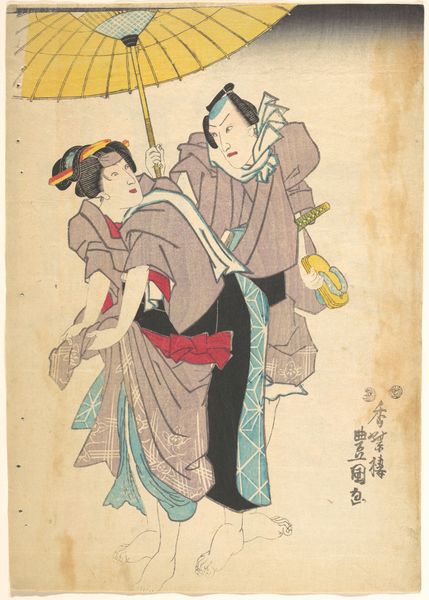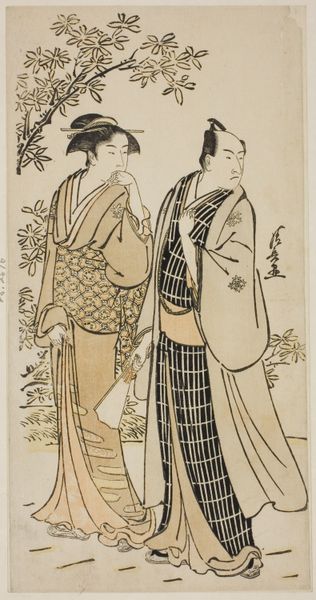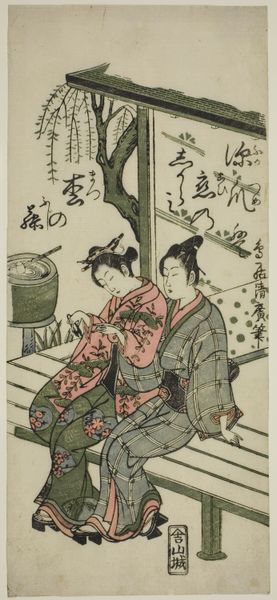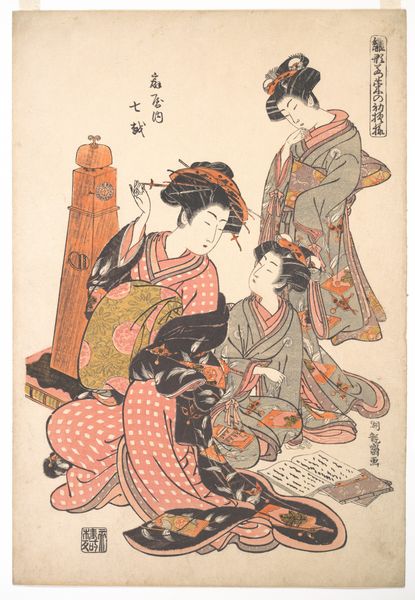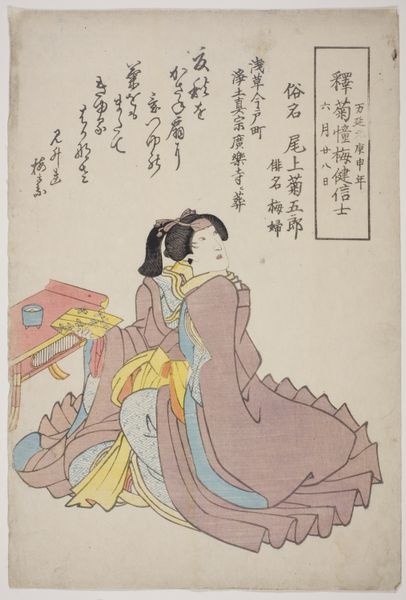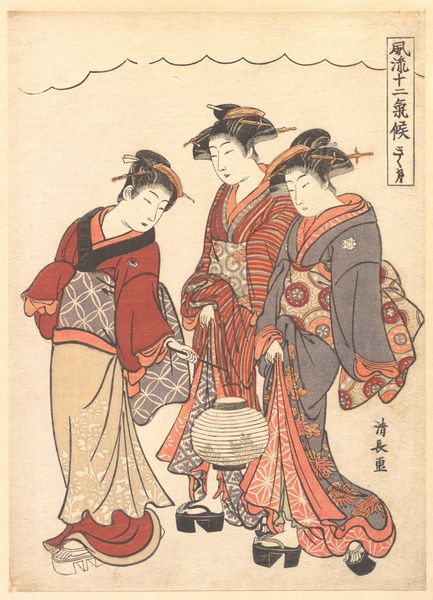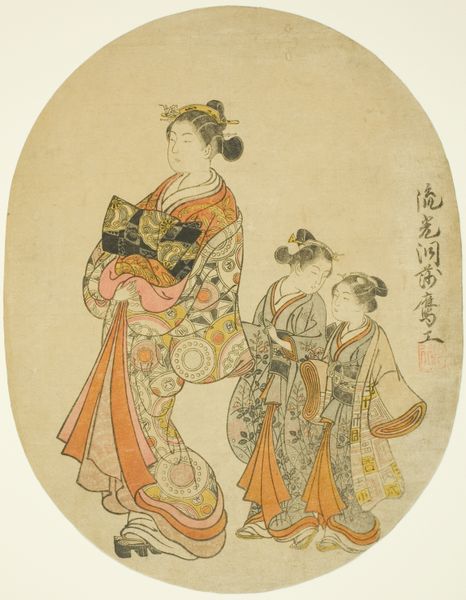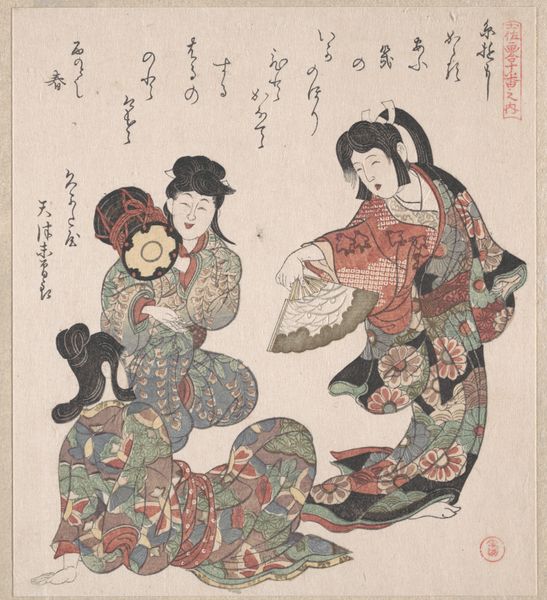
Memorial Portrait of the Actor Onoe Kikugoro IV and His Wife 1860
0:00
0:00
#
childish illustration
#
cartoon like
# print
#
asian-art
#
japan
#
cartoon sketch
#
handmade artwork painting
#
personal sketchbook
#
sketchbook drawing
#
watercolour illustration
#
cartoon style
#
cartoon carciture
#
sketchbook art
Copyright: Public Domain
Editor: Here we have "Memorial Portrait of the Actor Onoe Kikugoro IV and His Wife," a print made around 1860. There's something about the stylization and flat perspective that makes it seem dreamlike and slightly unsettling, and I am also intrigued by all of the writing covering the top and sides of the composition. What do you notice in this work? Curator: Note how the lines are distinct and precise, creating flat, almost planar forms. This emphasis on line, rather than volume or shading, is a defining characteristic of the print medium itself and contributes significantly to the artwork's aesthetic presence. Examine how color functions, as well. It’s applied in solid blocks, furthering the flattening effect and highlighting surface patterns. How does this relate to traditional Japanese aesthetics? Editor: Well, it avoids Western notions of realism, focusing instead on pattern and form. Is that intentional, though? Curator: The flatness compels us to contemplate the picture plane itself. By eschewing illusionistic depth, the artist calls attention to the two-dimensional nature of the print. Look closer at the interplay between positive and negative space, between figure and ground, within this surface area. These spatial relationships generate a dynamism within the artwork and provide meaning, separate from its historical value. Consider, what impact does that have? Editor: So, by minimizing depth and emphasizing surface qualities like color and line, we are driven to appreciate its intrinsic compositional values. I suppose, in this sense, the work transcends simply being a "portrait" of someone. Curator: Precisely. The artist directs our focus to the fundamental components of the image itself. A study of line, colour, pattern, and form is more than merely representational, then; it's revelatory.
Comments
No comments
Be the first to comment and join the conversation on the ultimate creative platform.




